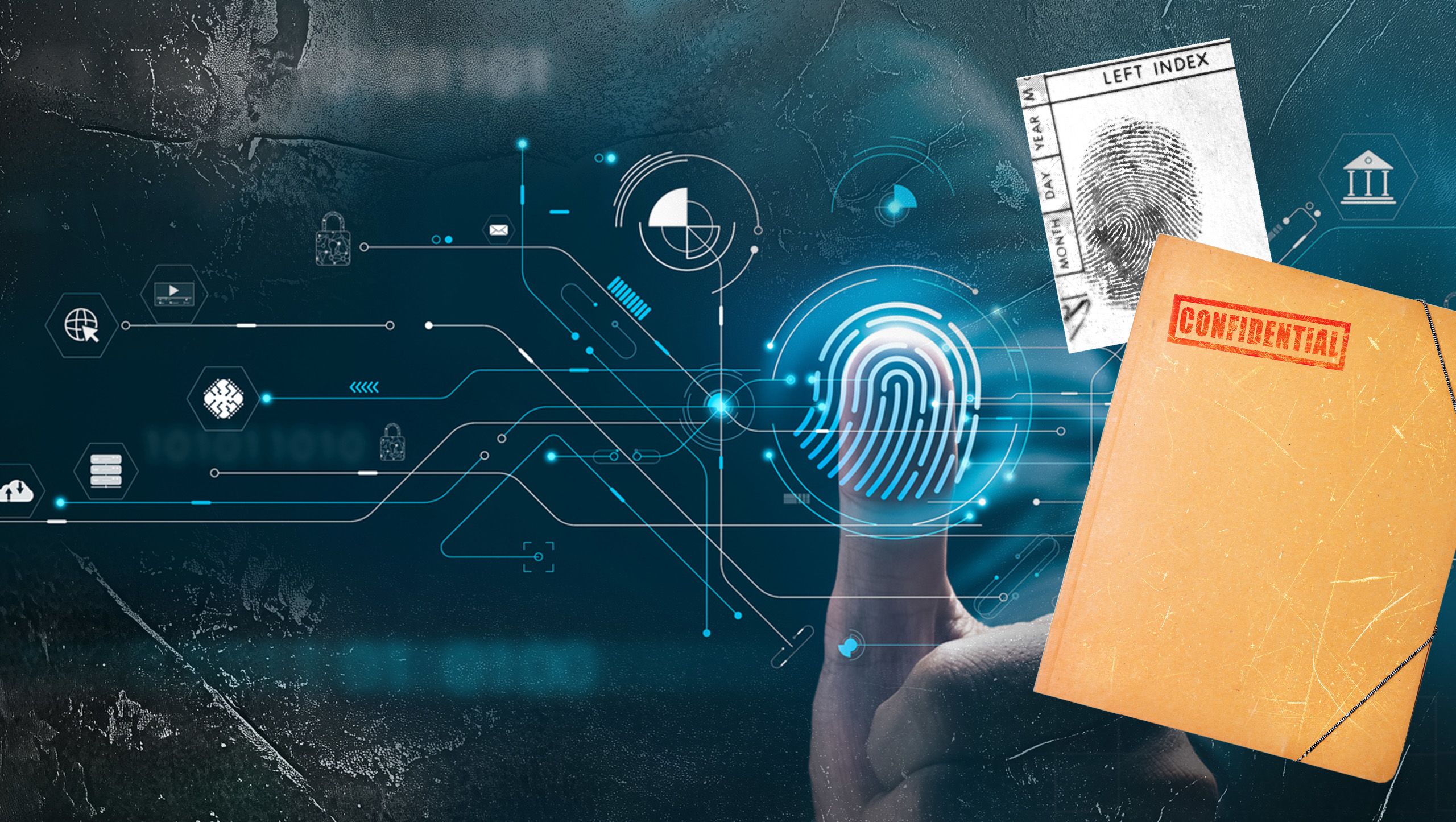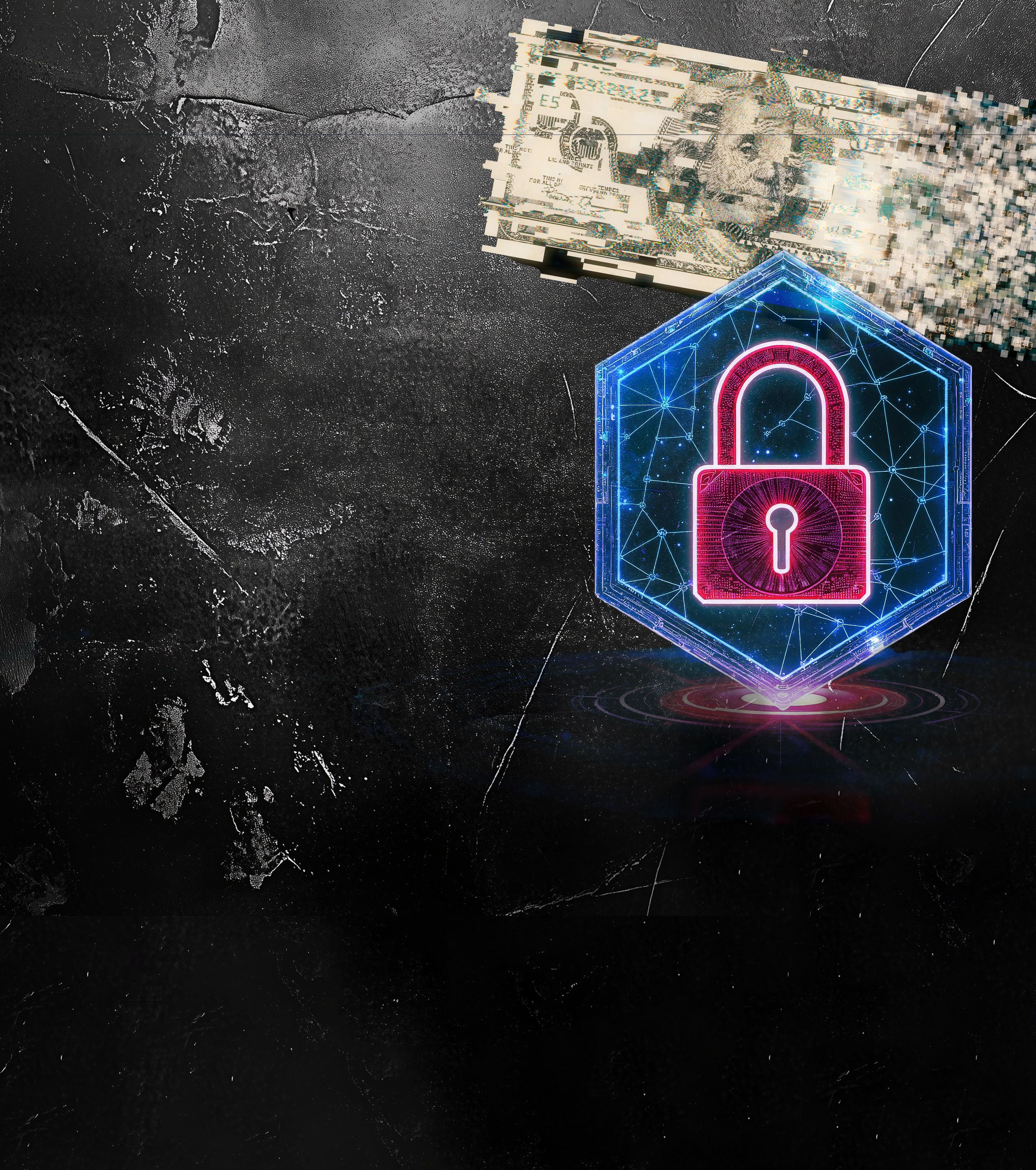Crime-Stopping Technology
Helping Law Enforcement Foster Safer Communities

A D.C. Beltway sniper is on a shooting spree randomly killing people who are pumping gas, reading a book on a park bench or even mowing the lawn during a three-week trail of terror in 2002. A cold case on a serial killer is still unsolved after 30 years. The clock is ticking on a missing child last seen in her Georgia residence in early March 2024. And billions of dollars are being electronically siphoned from the pockets of Americans through identity fraud by transnational organized crime groups.

What’s the Common Thread?

Technology solutions supplied to law enforcement agencies by LexisNexis® Risk Solutions helped solve these cases.
In fact, these essential tools work in overdrive every day to keep the country safer by tracking criminals, preventing violent crime and helping to recover missing children.
But in an age when threats never stop and continue to evolve — so much so that many crimes are now considered borderless — how do understaffed and underfunded law enforcement agencies keep ahead of the criminals and the kind of crimes that most of us never would have imagined 20 years ago?
If you ask any law enforcement officer what is the key to safe communities, they’ll tell you it’s not about catching the criminals after the crime. It’s about stopping the crime in the first place. And that takes powerful tools like the ones that LexisNexis Risk Solutions has been using for years in partnership with many of the country’s 18,000 federal, state, city and local law enforcement agencies to accelerate their ability to solve cases and prevent further crime.
By getting the right technology solutions into the hands of law enforcement and public safety professionals, they can identify the right person, right door, right car, right house, right business faster to move the needle on crimes across the board.
This benefits everyone because early identification and quick apprehension help prevent crimes from escalating.

Linking Digital and Physical Evidence
Years ago, the stereotype was of a guy in his mom’s basement demanding meatloaf while on his computer conducting identity theft or exploiting a child. We have Will Ferrell to thank for that image, but now cyber crimes come from all over the world including Russia, Eastern Europe, Asia and parts of Africa. And for those who’ve worked in the trenches — like the team of experts at LexisNexis Risk Solutions who collectively have hundreds of years of prior law enforcement experience as detectives, special agents, command staff and analysts — they know the focus cannot let up because it’s a race.
“Organized groups of criminals take their business very seriously and are reinvesting portions of illicit proceeds to purchase additional technology,” explains Michael Breslin, who spent 24 years in the United States Secret Service and now works with public safety agencies across the country as the Strategic Client Relations Director for Federal Law Enforcement at LexisNexis Risk Solutions.
“Law enforcement is just as serious and committed as the criminals are; and with the help of companies like us and public-private partnerships, we’re getting in front of the curve. So much so that LexisNexis Risk Solutions is almost synonymous in the law enforcement community with helping catch bad people.”
Today, using a whole host of solutions, government agencies and law enforcement can make timely and informed decisions to enhance investigations by utilizing insights that tie together physical and digital evidence.
Take a cold case from 1971, for example, involving the homicide of Isadore “Izzy” Pacht. After 34 years of periodic case reviews at the request of the Pacht family, it remained cold due to outdated, incomplete and inaccurate information included in the original case file. It wasn’t until 2005 after the New York Governor’s office assigned the case to detectives of the 48th Precinct New York City Detective Squad that the case was solved. And that’s thanks to the detective squad having access to the powerful public records database from LexisNexis Risk Solutions that includes law enforcement data from thousands of contributing agencies, according to Tom Joyce, who was the Lieutenant Commander of the New York Police Department Cold Case Squad at the time and is now Director of Public Safety, LexisNexis Risk Solutions, Government.
“We were able to use LexisNexis Risk Solutions databases and advanced linking technology to conduct name searches and investigate detailed address history to find witnesses and suspects who were previously unknown to us.”
“As a result, we tracked down and re-interviewed key witnesses from 1971 and located the final living suspect using address information revealed by the LexisNexis® Accurint® solution. In the end, we were able to obtain a confession using the 'associates and relatives' linked feature within Accurint®,” recalls Joyce.
Today, there are many pressing security challenges facing our nation.
According to Michael Hartenstein, Director of Public Safety Business Development within LexisNexis Risk Solutions, Government, who is a former United States Secret Service agent on presidential duty for 12 years, identity solutions are key to helping government agencies protect everyone from the public to presidents.
“Our country has a series of special, large-scale events in the next couple of years: the Presidential Inauguration, the FIFA World Cup, the NBA All-star Game, the Los Angeles Olympic Games in 2028. The United States Secret Service conducts security for these events and needs to make sure that the people coming into these events are who they say they are — because a truck filled with food driving up to the gate could be hiding explosives or any number of possible threat vectors. Through the LexisNexis® True ID® and our Accurint® Virtual Crime Center, we can tell if it’s really the person they claim to be and put an end to the threat.”



Trio of Threats to Identity

According to Breslin, there are three major identity crimes that Americans should be watchful of: fraud, impersonation and social engineering.
And while fraud used to be along the lines of writing a bad check to the bank or stealing money from a business, it’s much more specialized today with identity fraud, bank fraud, COVID relief fraud, unemployment fraud, disability fraud and electronic benefit transfer (EBT) fraud where criminals are stealing benefits from citizens who are in need.
“Worldwide fraud is so rampant that if it was a country, fraud would be the third wealthiest country in the world.”
He explains that cyberterrorists often go on the dark web to buy kits to conduct mass phishing and ransomware attacks on people and businesses. These groups then mask the IP addresses and conduct crimes against U.S. citizens from various points around the world.
“90% of all counterfeiting is overseas, so it’s all borderless today,” Hartenstein adds.
Once the fraud happens, it’s too late because the money’s gone. That’s why cutting-edge fraud prevention tools like identity proofing systems for authentication are used to help government agencies stop crime before it happens.
Just a few months ago, LexisNexis Risk Solutions helped the United States Secret Service with a nationwide crackdown to combat massive consumer fraud that is stealing much-needed money from low-income American families. The investigation targeted 49 suspects from transnational organized crime groups engaged in credit card skimming that use hidden skimmers installed on credit card machines and ATMs to steal public-assistance benefits.
“Our identity and data analytics solutions helped the investigators identify non-obvious connections and increase the target list to 500. As a result, the task force arrested seven people in California and three others in an operation in D.C.”
Impersonation is another threat that’s crept into the criminal’s toolbox. By misusing artificial intelligence (AI), they’ve increased their capability to impersonate using deep fakes, commonly pretending to be celebrities and politicians.
And the third bucket in the arsenal of today’s identity criminal is social engineering. Again, they’re using AI and the dark web as their avenue of choice ― now commonly referred to as “fraud as a service” instead of “cybercrime as a service” — to conduct massive ransomware attacks where they can mimic the style of writing of, for instance, the CEO of a business.
LexisNexis Risk Solutions technology tools like identity verification, authentication and background checks are vital for law enforcement, according to Breslin, because they act as a fortress to get ahead of the fraud before it happens.



Threats to Evidence

The vast amounts of evidence today are creating new threats for law enforcement agencies to worry about, Breslin points out. With reams and reams of data coming in through cell phones, video cameras and body cams to name a few, there’s too much data for investigators to sift through.
“There’s a fear that AI groups could erase it and wipe away data that is potentially crucial evidence,” Breslin states.
Solutions are also put in place so that attorneys, prosecutors and district attorneys at the state and federal levels can protect any outside threats from tampering with evidence.

Threats to Kids

Missing and exploited children continue to be a massive challenge globally. According to the National Center for Missing Exploited Children (NCMEC), their CyberTipline received a staggering 36.2 million reports of suspected child sexual exploitation in 2023. 63,892 of these cases were urgent and involved children in imminent danger and were immediately escalated to law enforcement. Child sex trafficking is one form of exploitation that has exploded with the ease of access and low cost of the internet. Of the more than 25,000 cases of children reported missing to NCMEC in 2023 who had run away, one in six were likely victims of child sex trafficking. Today, the average age of child sex trafficking victims reported missing to NCMEC is a mere 15 years old.
NCMEC has also seen a 323% increase in online enticement reports to the Cyber Tipline between 2021 and 2023. Included in this category are sextortion cases, where teenage boys between the ages of 12 to 15 are commonly targeted. Similar to financial extortion crimes, the offender demands money from the child in exchange for not exposing sexually explicit videos or pictures of the child. The FBI reports 13,000 cases of sextortion were filed between 2021 and 2023 and there are more than 20 known suicides that resulted from this act.
LexisNexis Risk Solutions has a long history of working with NCMEC and has aided in the rescue of more than 900 missing children through intelligence packages and back-end technology (information and analytics). In addition, LexisNexis Risk employee Trish McCall co-founded a highly successful initiative called the ADAM (Automated Delivery of Alerts on Missing Children) ProgramTM that NCMEC uses to quickly distribute missing child posters and case details to police, news media, schools, businesses, medical centers and everyday citizens who have opted into the program.
According to Breslin, who serves on the NCMEC board of directors, in 2023 the ADAM Program was used by NCMEC to distribute nearly 1.2 million poster alerts on 1,672 missing child cases.
ADAM Program Helps Rescue Children
- A family of five children were safely recovered from a remote area in the woods in rural Missouri after the ADAM program pinpointed a small town where the children were seen getting supplies.
- A 1-year-old child missing from Texas was recovered after a concerned citizen recognized her from an ADAM poster alert seen in a local convenience store.
- Three months after going missing, a 17-year-old child was safely recovered in Atlanta after an officer with the Metro Atlanta Police Department recognized her from the ADAM poster they had received.
Signing up for the ADAM Program is easy: adamprogram.com

Moving the Needle on Crime
Safeguarding both the public and the officers entrusted with protecting us is a tall task, but technology is proving to be the equalizer when it’s put in place by city, state and federal law enforcement agencies and the intelligence community.
And even as crimes have become more advanced, so has LexisNexis Risk Solutions with not only investigative tools and platforms but also a team of federal law enforcement experts on staff to lend their expertise at keeping the country safe.

Secret Weapon: LexisNexis Risk Solutions has the insights and subject matter experts
For decades, they dedicated themselves to making our streets safer, and now they're continuing that mission in a new role. Meet three law enforcement experts who have joined LexisNexis Risk Solutions, Government, where they’re now using technology to protect our communities in a different way. Discover why embracing this new badge of technology is so important to them.
Michael Breslin
Michael Breslin is a 24-year veteran of the United States Secret Service who started his career while still in college – working helping homeless children in the South Bronx of New York. The native New Yorkers’ first official job was with the Child Welfare Agency, canvassing neighborhoods with paper and clipboard to make sure mothers had what they needed to take care of their children.
Today the paper and clipboard have been replaced by cutting-edge technology that gives public safety agencies – including the National Center for Missing & Exploited Children where he sits on the board – what they need to solve crimes.
“Whether it’s a state unemployment agency trying to get the right benefits to the right people and bypass fraud attempts or the FBI, U. S. Secret Service or DEA trying to catch transnational criminal groups and identify the targets and apprehend them, our team is there with a solution to help them stay a step ahead.”
Tom Joyce
Tom Joyce is a no-nonsense native New Yorker with 20 years in the New York Police Department (NYPD) solving a multitude of murders. He started with the New York City Transit Police conducting criminal investigations in 1986, then advanced to doing murder investigations as an NYPD detective in the organized crime bureau, and later served as the Lieutenant Commander of Detectives of the NYPD Cold Case Squad.
In 2005, Joyce attended a law enforcement conference where he was asked to do a presentation for the media on working a murder case. While there, he saw the chief of police and captain of major crimes for two of the largest cities in the U.S. watching a demo of a LexisNexis Risk Solutions tool.
“I interrupted and said, ‘Hey guys, I’m using this tool all the time in the New York Police Department Cold Case Squad to solve cold cases. And I don’t know how any detective squad isn’t using it because it’s that effective. If you don’t buy that product, you’re deficient in your duties as commanders of detectives and executives of police departments,’” Joyce adds.
Now as part of LexisNexis Risk Solutions, Joyce is working to get these tools into the hands of more departments within the law enforcement community so they can meet their missions of preventing and investigating crime.
“The faster you find the identity of the criminal, the faster you locate them. And the faster you apprehend them means future crimes aren’t committed. Everybody deserves to live safely and peaceably, and we just can’t do it anymore without technology.”
Mike Hartenstein
Philadelphia native Mike Hartenstein amassed 21 years in the United States Secret Service after starting out in the field office of his hometown doing criminal investigations for fraud, counterfeit and other crimes against the Treasury. From there, he worked in protection, conducting advance work for presidential visits to Philly and eventually worked as a U.S. Secret Service agent on the presidential details for Presidents Bush, Obama and Trump – a total of 12 years.
He’s worked in resolving transnational organized crime within the Criminal Investigative Division, counterterrorism within the FBI and protective intelligence within the Protective Intelligence Operations Center. And while he’s loved all of his assignments, he gushes about his time at the Academy overseeing protective training for the U.S. Secret Service.
“We want to make sure our people go home safely at the end of the day, so that assignment meant a lot to me. And now my assignment with LexisNexis Risk Solutions provides identity tools that are key to helping our government agency partners solve the immense challenges of today to keep everyone safer.”



